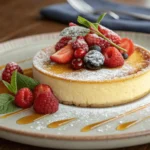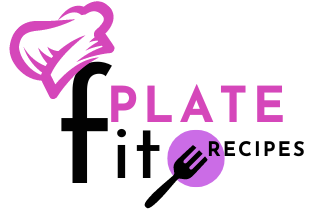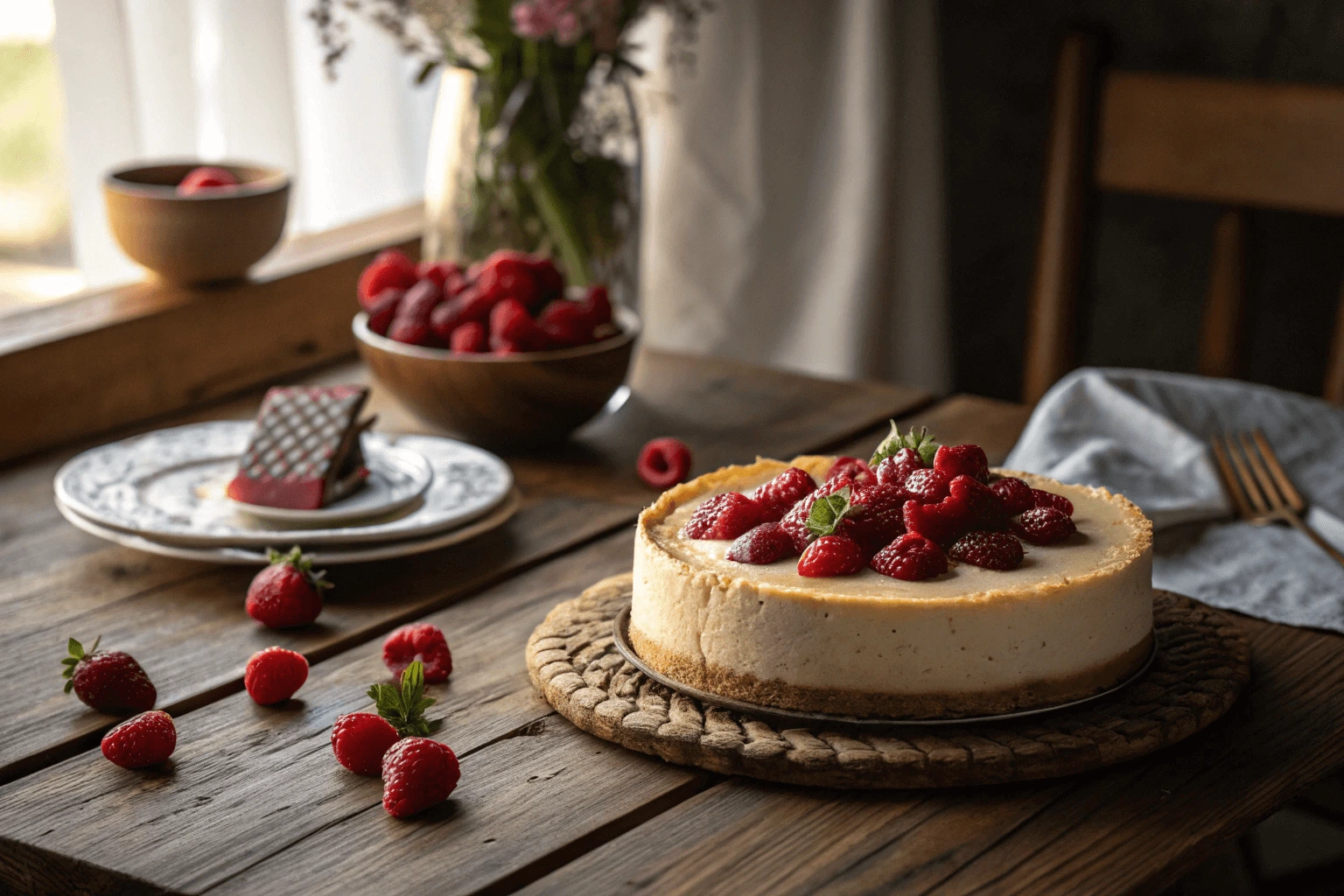Introduction
French cheesecake is more than just a dessert—it’s a delicate blend of tradition, taste, and texture that sets it apart from its global counterparts. This article takes you on a journey to uncover what makes French cheesecake so unique. From its ingredients and history to its preparation and how it compares to American cheesecake, we’ll dive into all things cheesecake with a French flair. Along the way, we’ll also answer burning questions like what do French call cheesecake? and what is the difference between French cream cheese and American cream cheese?
Contents
What is French Cheesecake?
How French Cheesecake Differs from the Classic Cheesecake
French cheesecake is distinctively lighter, softer, and less sweet than the classic cheesecake most are familiar with. While American cheesecake often uses heavy cream cheese as its base, the French version leans on ingredients like fromage blanc or cream fraîche. This gives it a silkier texture and a slightly tangy flavor. Moreover, French cheesecake is typically less dense and doesn’t feel as heavy after a meal.
Its preparation also differs significantly. Unlike the thick graham cracker crust common in American cheesecakes, the French version opts for a thin pastry base or sometimes skips the crust altogether. This simplicity highlights the natural flavors of the creamy filling, allowing it to truly shine.
The Allure of French Cheesecake in Dessert Culture
For many, French cheesecake epitomizes elegance in the world of desserts. It’s not overly indulgent but strikes a perfect balance between richness and lightness. Often served with a sprinkle of powdered sugar or fresh fruits, it pairs wonderfully with a hot cup of coffee or a chilled glass of white wine.
It’s no surprise that this dessert has found a place in both fine dining and casual French bistros. Whether you’re indulging in a slice at a Parisian café or baking one at home, French cheesecake offers a taste of sophistication that’s hard to resist.
Key Ingredients That Set French Cheesecake Apart
Understanding the Unique French Cream Cheese
One of the defining features of French cheesecake is its use of fromage blanc or cream fraîche as a base. These cheeses are lighter and creamier compared to the dense cream cheese typically used in American recipes. This choice of cheese gives the dessert its signature airy texture and delicate tang.
So, what is the difference between French cream cheese and American cream cheese? For starters, French cream cheese is often softer and contains fewer stabilizers, resulting in a more natural, fresh flavor. This difference directly impacts the cheesecake’s taste and texture, making it less heavy and easier to enjoy after a rich meal.
Why Ingredients Matter for Authenticity
Beyond the cheese, other key ingredients contribute to the uniqueness of French cheesecake. Eggs play a critical role in providing structure, while sugar is used sparingly to keep the sweetness subtle. Additionally, many traditional recipes avoid graham cracker crusts, instead opting for a thin pastry layer or no crust at all.
High-quality, simple ingredients are at the heart of an authentic French cheesecake. Fresh, full-fat dairy products, organic eggs, and a hint of lemon zest can transform this dessert into something extraordinary. Moreover, the lack of artificial thickeners or overpowering sweetness allows the natural creaminess to take center stage.
When it comes to French cheesecake, it’s clear that the ingredients aren’t just chosen for practicality—they’re chosen to bring out the best flavors and textures.
French Cheesecake Through History
A Brief Look at the Origins of French Cheesecake
Cheesecake itself has ancient origins, with variations dating back to Ancient Greece and Rome. However, French cheesecake developed its own unique identity over the centuries, influenced by the rich culinary traditions of France. Early versions often featured simple ingredients like fresh cheese and eggs, reflecting the country’s emphasis on natural, high-quality foods.
Over time, as French cuisine evolved, so did its desserts. Regional variations of cheesecake began to appear, with each area adding its twist to the recipe. For example, regions that produced fromage blanc naturally incorporated it into their cheesecakes, creating a dessert that felt both luxurious and approachable.
How French Cheesecake Became a Culinary Icon
By the 19th century, French cheesecake had firmly established itself as a beloved treat, appearing in cookbooks and on the menus of fine restaurants. Its light, airy texture and subtle sweetness made it a perfect choice for ending a meal without overwhelming the palate.
Today, what do French call cheesecake? It’s often referred to as Gâteau au Fromage or Tarte au Fromage Blanc, depending on the region and style. This dessert continues to hold its place as a symbol of French culinary artistry, combining simplicity with sophistication.
How to Make French Cheesecake at Home
Step-by-Step Recipe Guide
Making French cheesecake at home is simpler than it seems, and the results are well worth it. Here’s a quick recipe to get you started:

Ingredients:
- 2 cups fromage blanc (or cream cheese if unavailable)
- 1/2 cup sugar
- 3 large eggs
- 1/4 cup heavy cream
- 1 tsp vanilla extract
- Zest of one lemon

Steps:
- Preheat your oven to 325°F (165°C). Grease a round springform pan and line the bottom with parchment paper.
- In a large bowl, mix the fromage blanc and sugar until smooth. Add eggs one at a time, mixing gently after each addition.
- Stir in the heavy cream, vanilla extract, and lemon zest until the batter is creamy.
- Pour the batter into the prepared pan. Bake for 45–50 minutes, or until the center is slightly jiggly but the edges are set.
- Let the cheesecake cool at room temperature, then refrigerate for at least 4 hours before serving.
Tips for Achieving the Perfect Texture and Flavor
The secret to a creamy French cheesecake lies in the gentle mixing of ingredients—overmixing can lead to a dense texture. Additionally, a water bath (placing the pan in a larger pan with hot water) can prevent cracks and keep the texture silky.
For a more authentic flavor, try sourcing French fromage blanc. If unavailable, you can blend cream cheese with a bit of sour cream for a similar tangy profile.

For more delicious recipes like this, check out the dessert section of Fit Plate Recipes.
French Cheesecake vs. American Cheesecake: Key Differences
Comparing Ingredients and Preparation Methods
One key distinction between French cheesecake and its American counterpart lies in the ingredients. While American cheesecake heavily relies on cream cheese, the French version opts for lighter options like fromage blanc or cream fraîche. This gives French cheesecake its signature airy texture and slightly tangy flavor.
Another notable difference is the crust. American cheesecakes typically feature a rich graham cracker base, whereas French recipes often have a thin pastry crust or no crust at all. Additionally, the French style uses less sugar, keeping the sweetness subtle.
Taste, Texture, and Presentation Contrasts
When it comes to taste, what is the difference between French cheesecake and regular cheesecake? French cheesecake is more delicate, with a focus on natural flavors, while American cheesecake is richer and sweeter. The texture of the French version is also lighter and less dense, making it a preferred choice for those who want a refined dessert.
Presentation-wise, French cheesecakes are often minimalist, garnished with fresh fruits or a dusting of powdered sugar. This simplicity allows the creamy filling to shine without distractions.
The Most Popular Variations of French Cheesecake
Exploring Regional Cheesecake Styles in France
France’s rich culinary heritage has inspired several delightful variations of French cheesecake, each reflecting regional flavors and preferences. For instance, in Alsace, you’ll find a cheesecake made with fromage blanc that’s subtly sweet and tangy. Its light and airy texture perfectly complements the region’s love for simple, rustic desserts.
Meanwhile, in Normandy, cheesecakes often include a hint of crème fraîche or apple cider, a nod to the area’s famous dairy and apple production. These small regional tweaks make each cheesecake unique, showcasing the diversity of French cuisine.
What do French call cheesecake? Depending on the region, it’s referred to as Tarte au Fromage Blanc or simply Gâteau au Fromage.
Creative Twists on the Classic French Recipe
Modern takes on French cheesecake are equally exciting. Chefs have started adding ingredients like lavender, honey, or almonds to give their creations a signature flair. Some even incorporate fresh fruits, such as raspberries or figs, to add a burst of flavor and color.
For those who prefer a crust, a thin layer of buttery pastry is often used to provide just the right amount of crunch without overpowering the creamy filling. No matter the variation, the heart of French cheesecake remains its light texture and natural flavors.
Where to Buy French Cheesecake in the USA
Top-Rated Bakeries for Authentic French Cheesecake
If you’re craving an authentic slice of French cheesecake but don’t want to bake it yourself, several bakeries in the USA specialize in French-inspired desserts. In cities like New York and San Francisco, you’ll find patisseries offering this lighter, creamier alternative to traditional cheesecake.
Look for bakeries that use fresh ingredients like fromage blanc or French cream cheese to replicate the true taste of French cheesecake. Many of these shops also offer regional twists, such as lavender-infused cheesecakes or those topped with seasonal fruits.
Online Stores Offering French Cheesecake Delivery
For those who aren’t near a bakery, online stores have made it easy to enjoy French cheesecake from the comfort of home. Websites like Goldbelly and French gourmet retailers often ship desserts nationwide, ensuring the cake arrives fresh and ready to enjoy.
Whether you visit a local bakery or order online, you’ll find that French cheesecake provides a refreshing alternative to the heavier American version.
For more delightful desserts, be sure to check out additional recipes on Fit Plate Recipes.
Pairing Suggestions for French Cheesecake
Wines, Coffees, and Teas That Complement the Flavor
The subtle tang and creamy texture of French cheesecake make it a versatile dessert that pairs wonderfully with a variety of beverages. If you’re a wine lover, a glass of chilled Sauternes or Muscat complements the cheesecake’s mild sweetness without overpowering it. For a more robust pairing, a dry Champagne adds a crisp contrast to the creamy filling.
For coffee enthusiasts, a freshly brewed cup of espresso or a mild French roast balances the dessert’s lightness while enhancing its subtle flavors. Tea drinkers can enjoy French cheesecake alongside herbal teas, such as chamomile or lavender, which match the dessert’s elegant profile.
Serving Ideas for an Elegant Dessert Experience
To elevate the presentation, serve French cheesecake with fresh fruit like raspberries or sliced pears. A drizzle of honey or a dusting of powdered sugar can add a touch of sophistication. Pair it with a scoop of vanilla bean ice cream or a dollop of whipped cream for added indulgence.
Whether you’re hosting a dinner party or enjoying a quiet evening, these pairings and serving ideas enhance the experience of savoring this light and refined dessert.
FAQs About French Cheesecake
What is the difference between French cheesecake and regular cheesecake?
French cheesecake is typically lighter and less sweet than the dense, cream cheese-based American version. Its use of fromage blanc or cream fraîche gives it a tangy and airy quality that sets it apart.
What is the name of the French cheesecake?
The French often refer to cheesecake as Tarte au Fromage Blanc or Gâteau au Fromage. The name may vary depending on the region, but the dessert always reflects French culinary finesse.
What do French call cheesecake?
In France, cheesecake is generally called Tarte au Fromage Blanc. This name highlights the use of fresh cheese, which is a key ingredient in many French recipes.
What is the difference between American and European cheesecake?
The primary difference lies in the ingredients and texture. European cheesecakes, including the French variety, are lighter and less sweet, often relying on fresh cheeses. In contrast, American cheesecakes are richer and denser due to the heavy use of cream cheese.
What are the three types of cheesecake?
The three main types of cheesecake include baked cheesecake, no-bake cheesecake, and crustless cheesecake. French cheesecake often falls into the baked category, with its light and airy texture being the standout feature.
What is the difference between French cream cheese and American cream cheese?
French cream cheese is smoother and less dense, with fewer stabilizers compared to its American counterpart. This difference contributes to the lighter texture and more refined flavor of French cheesecake.

How to Make French Cheesecake: A Perfectly Creamy Delight
- Total Time: 5 hours 5 minutes
Description
French cheesecake is a light, creamy dessert that’s subtly sweet and tangy, thanks to ingredients like fromage blanc and lemon zest. This elegant treat is perfect for any occasion and easy to make at home with just a few simple steps.
Ingredients
-
For the Filling:
- 2 cups fromage blanc (or cream cheese as a substitute)
- 1/2 cup sugar
- 3 large eggs
- 1/4 cup heavy cream
- 1 tsp vanilla extract
- Zest of one lemon
-
For the Crust (Optional):
- 1 cup all-purpose flour
- 1/4 cup sugar
- 1/2 cup unsalted butter, chilled and cubed
Instructions
-
Prepare the Crust (Optional):
- Preheat the oven to 325°F (165°C).
- Mix the flour, sugar, and butter until crumbly. Press the mixture into the base of a greased springform pan. Bake for 10 minutes and set aside.
-
Make the Filling:
- In a large bowl, whisk fromage blanc and sugar until smooth. Add the eggs one at a time, mixing gently after each addition.
- Stir in the heavy cream, vanilla extract, and lemon zest until the mixture is creamy and well combined.
-
Bake the Cheesecake:
- Pour the filling into the prepared crust (or directly into the pan if skipping the crust).
- Bake for 45–50 minutes or until the center is slightly jiggly and the edges are set.
-
Cool and Chill:
- Let the cheesecake cool at room temperature before refrigerating for at least 4 hours (or overnight) to set completely.
-
Serve:
- Garnish with fresh berries, a drizzle of honey, or powdered sugar. Slice and enjoy!
Notes
- If you can’t find fromage blanc, blend cream cheese and a little sour cream to achieve a similar texture and tanginess.
- A water bath can help prevent cracks on the surface of your cheesecake. Simply place the pan inside a larger pan filled with hot water before baking.
- Store leftovers in the refrigerator for up to 3 days.
- Prep Time: 15 minutes
- Cook Time: 50 minutes
- Category: Dessert
- Cuisine: French

